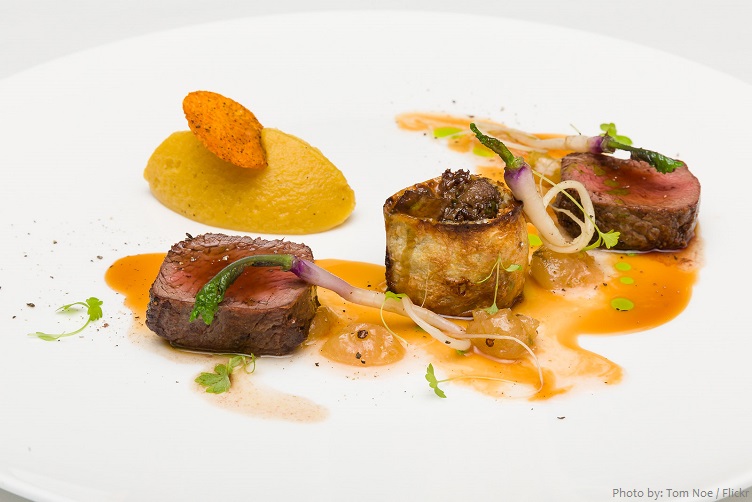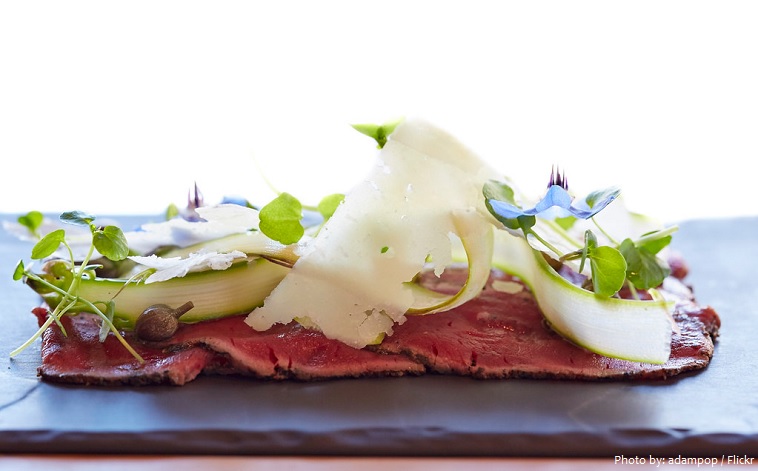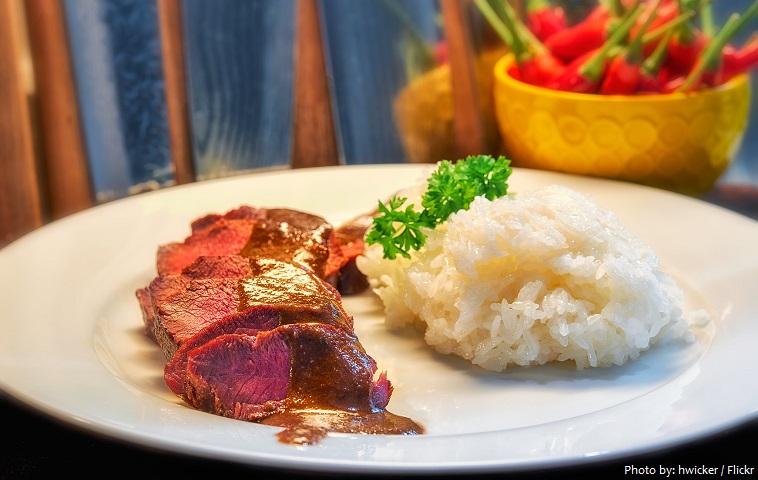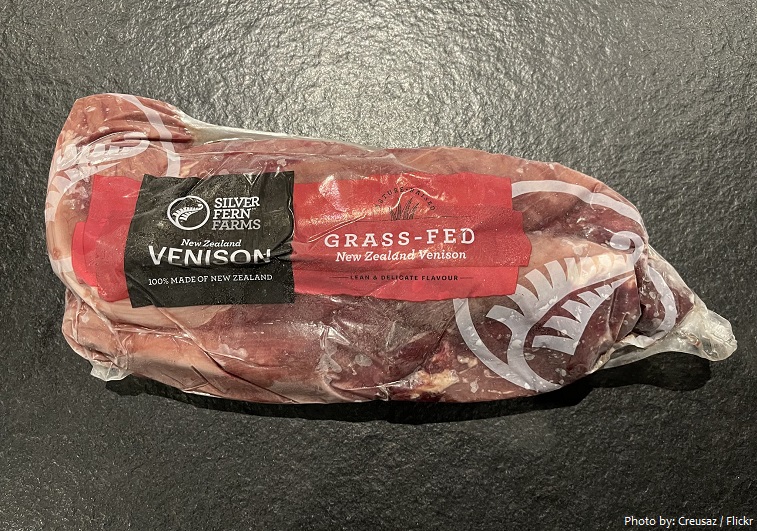
Venison is the meat from any kind of deer – originally, the term referred to any kind of edible game.
The word “Venison” comes from Latin venatus, meaning “to hunt”. This word entered the English language through Norman in the 11th century, following the Norman conquest of England and the establishment of Royal Forests.
This lean, meat has a deep colour and rich flavour. It comes as a haunch, side, saddle or shoulder, filleted into steak or made into sausage and teams well with fruit, red wine, robust sauces and hard herbs.
Lean venison roast, before cooking, contains by weight approximately 75 percent water, 20 percent protein, and 2 percent fat – this protein content is about the same as that of a lean beef rump.

When people describe venison taste and texture, they often use words like rich or earthy – this is a festive-tasting meat, often imbued with hints of the acorns, sage and herbs that the deer enjoyed during its life. It’s also considered to be less juicy and succulent than beef, but also smoother and firmer.
Pasture-raised venison does not have the “gaminess” often associated with hunted deer, and it has found its way onto restaurant menus across the country, raising awareness of its culinary appeal. With short, thin muscle fibers, deer meat stays firm but reasonably tender, with a smooth texture.
Like most game, deer after being killed should be drained of blood and allowed to cool. Venison may be eaten fresh, but it is generally hung in a cool place for three to five days, and often for six to ten days or more, for aging, or ripening. Aging enhances the tenderness and the palatability of the meat, particularly in older deer.

Venison may be eaten as steaks, tenderloin, roasts, sausages, jerky, and minced meat.
Venison, much like beef or pork, is categorized into specific cuts, including roast, sirloin, and ribs.
Organ meats (offal) of deer can also be eaten. Traditionally, they are called hombres (originally the Middle English hombres). This is supposedly the origin of the phrase “humble pie”, meaning a pie made from the organs of the deer.
Venison burgers are typically so lean as to require the addition of fat in the form of bacon, beef, olive oil, or cheese to achieve parity with hamburger cooking time, texture, and taste.
There are 150 calories in 100 grams of venison.

In 100g of venison there’s approximately 24 g of protein – a pretty decent serving size. Venison (like all animal products) is also what we call a complete protein, containing all of the essential amino acids our bodies can’t make on their own (hence being called essential, because it’s essential that we eat them).
Venison is also rich in iron and in particular haem iron that is easily absorbed by the body, which prevents anaemia and helps you convert the food you eat into energy.
Venison is actually one of the best sources of zinc, just 100 g of venison gives you about 32% of the average daily requirement. Zinc is good for strengthening our immune system, helping maintain the health of your skin, and also for reproductive health — especially in men. A good serving of venison in your diet can help to keep you in tip top shape.

Venison is packed with lots of B vitamins helping keep our brain and nervous system function in check. B vitamins are important to keep your energy levels up and can affect everything from our hair to our digestion and deficiency can influence mood and produce depressive-like behaviour.
Venison is naturally low in sodium, so it’s better for your heart than other red meats.
Most venison sold through retail in the United States are farmed from New Zealand and Tasmania. It is available through some high-end specialty grocers and some chains which focus on more “natural” meats.
Venison has a reputation for being expensive, but in reality, it is often cheaper than beef and many other types of meat.

There are about 50 species of deer.
Deer are native to Europe, Asia, North America, South America and northern Africa. Humans introduced deer to Australia, New Zealand and South Africa.
It is a kosher animal according to Jewish religious law and a halal animal according to Muslim religious law. Deer hunting is prohibited by Orthodox Judaism, as deer must be slaughtered, deveined, and salted according to the principles of kashrut.
In southern Africa, the word venison refers to the meat of antelope, a Bovidae taxon, as there are no native Cervidae in sub-Saharan Africa.